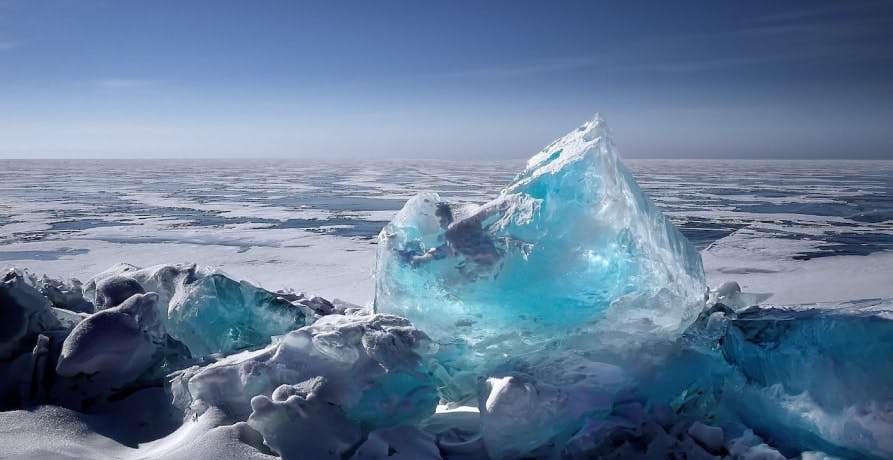ESG / CSR
Industries
Climate Change in 2026: Where Do We Stand?



Key Topics You’ll Learn About in This Article
The impact of the climate crisis on society
Ongoing policies and new regulations designed to reduce the impact of climate change
The future of our planet is climate change continues to worsen on its current trajectory
Climate change has been a growing problem, as it has impacted the way businesses operate, how developing countries strive to obtain resources, and how we rebuild local communities after suffering the nasty effects of natural disasters due to global warming.
Needless to say, climate change has continued to change life on Earth as we know it – and will continue to do so until we stabilise or cool rapidly rising global surface temperatures.
Where does climate change stand in 2026?
In this article, we'll discuss the current climate crisis, climate change progress as of 2026, and ways we can reduce global greenhouse gas emissions, and international climate politics.
What Is Climate Change?
Shifts in climate change are innate and are expected to evolve over time during the solar cycle, but according to the Intergovernmental Panel on Climate Change – increased human activity such as industrialisation and urbanisation have impacted the natural cycle of climate change, causing the annual global average temperature to increase and the need to limit global warming.
In fact, the World Health Organization, also known as WHO, have declared the global temperature rise and excessive act of burning fossil fuels to be one of the greatest threats to global health. Therefore, the increase of the global average surface temperature not only has an affect on the climate system, but on human health.
Fossil fuels, carbon dioxide, and various greenhouse gas emissions have made climate change a more predominant problem in our society, and it has given climate change the power to ultimately impact the way we approach sustainable business and daily lifestyle habits – such as by paying more attention to the global average temperature and ways to reduce emissions .
Seeking to reduce greenhouse gas emissions is essential to limiting global warming, which can be accomplished by following the Paris Agreement goals, forbidding new fossil fuel projects, and analyzing the results of the Climate Change Performance Index.
What is the Climate Change Performance Index?
The Climate Change Performance Index, or the CCPI, makes use of a standardised framework to compare and contrast the global efforts being implemented for climate change across the world.
Four main categories are used for the CCPI: GHG emissions, renewable energy, energy use, and international climate policies.
The summary cards below will reveal how these four categories are used for the Climate Change Performance Index:
The Climate Change Performance Index (CCPI) is an annual publication that evaluates and compares the climate protection performance of 60 countries and the European Union, which collectively are responsible for over 90% of global greenhouse gas (GHG) emissions.
Main Goal of the Climate Change Performance Index
The main of the CCPI is to accomplish the following:
- Encouraging Climate Action – The compare and contrast resources available via the CCPI should motivate countries to build climate resilience, implement clean energy technologies, and reduce their own climate impacts.
- Boost Transparency – One of the biggest hurdles in fighting against climate change is working to ensure that all countries are honest regarding their current climate risk and climate related hazards on a global scale. Luckily, the CCPI can help to increase transparency in international climate politics by clearly delineating nationally determined contributions.
- Showcase Success Stories – The CCPI showcases best practices in climate policy, climate variability, circular economy principles, and any and all other climate adaptation measures taken to help inspire other nations around the world.
Score Break Down
Scoring via the Climate Change Performance Index is calculated via the following categories:
The Climate Policy category evaluates both national and international climate policy efforts to ensure that climate ambition, clean energy investments, efforts to improve energy efficiency, and more are well documented.
Data Sources
The CCPI uses data from reputable sources such as:
- International Energy Agency (IEA)
- Food and Agriculture Organization of the United Nations (FAO)
- United Nations Framework Convention on Climate Change (UNFCCC)
Which Countries Have Succeed Most under the Climate Change Performance Index?
Nordic countries such as Sweden, Denmark, and Finland have high CCPI scores as a result of their extensive efforts to implement renewable energy policies, clean energy manufacturing, and efforts to reduce methane emissions, limit warming, and work towards net zero targets.
Benefits of the Climate Change Performance Index
The CCPI serves can help all stakeholders by:
- Helping policymakers by providing them with a benchmark to measure their progress
- Providing NGOs and Activists with data to help push the need for stronger climate policies and international cooperation
- Allow the general public to better understand their country's own climate performance

What Is the Difference between Climate Change and Global Warming?
The battle cards below will break down the differences between climate change and global warming:
Think of planet Earth like a person who is out and about in a winter storm wearing a heavy winter jacket. Now, imagine that the Earth is still wearing that jacket and isn't allowed to take it off – and the weather suddenly changes from winter to summer… a toasty summer, at that.
That's how the Earth feels due to global warming – suffocating in heat and unable to find any immediate relief. Global warming is due to the burning of fossil fuels that create greenhouse gas emissions and trap the sun's heat and provoke temperatures to rise.
Changes in the Earth's climate such as sea level rise, seasonal snow cover, ocean acidification, sea ice, and ice sheets would all refer to climate change – where as reports regarding greenhouse gas concentrations or the most potent greenhouse gas refer more to global warming.

Why Is Climate Change Bad for the Planet and Life on Earth?
Climate change is occurring due to our increased industrial activity, urbanisation, and high-carbon emitting pleasures like travel and the rapid acceleration of consumerism for products like fast fashion. These activities deplete unnecessary resources, while also worsening pollution with the extensive use of fossil fuels that perpetuate even more greenhouse gas emissions – which all aids to maintain climate change to be the crisis that it is.
The interactive flip cards (move cursor over card to flip) will reveal just a few of the reasons why climate change is bad for both the planet ad life on Earth:
Climate does not only threaten human life, but various animal species on the planet as well.
Rising temperatures, specifically in the Arctic region, have caused ice glaciers to melt and in turn have threatened all forms of life that dwell in cold environments.
Many animals have been left with no choice but to flee their natural habitats. Also, climate change has affected plants, trees, and flowers – as they are no longer following their natural life cycles due to these spontaneous shifts in weather patterns.
These challenging events are only expected to occur with increased severity at a more frequent rate as climate change continues to be a problem.

How Did Climate Change Start?
Climate change began in correlation to the increased industrialisation habits that began back in the 1860s. However, the effects of climate change have been most noticeable since the 1950s, when industrialisation began to occur at a newfound rapid pace.
Scientists discovered the phenomenon of climate change after measuring the surface temperature of various oceans, and were able to correlate the significant increase with the growing rates of urbanisation, industrialisation, and human consumerism.
The vertical timeline below will reveal how climate change grew into the problem it is today from the 1800s all the way to present day in 2026:
1. Industrial Revolution Expands (1800s) 🏭
Coal-powered factories and railways scale up fast, kicking off long-term, human-driven greenhouse gas emissions.
2. The Greenhouse Effect Is Identified (mid–late 1800s) 🔬
Scientists begin connecting certain gases in the atmosphere to heat-trapping, laying the groundwork for climate science.
3. Oil, Cars, and Mass Consumption Take Off (1900s–1950s) 🚗🛢️
Petroleum becomes the fuel of modern life—transportation, plastics, and industry expand emissions far beyond coal alone.
4. “Great Acceleration” (1950s–1970s) 📈
Population growth, global trade, and energy demand surge; deforestation and industrial agriculture increase climate pressure.
5. Climate Change Enters Public Policy (1980s–1990s) 🏛️
International coordination begins as evidence strengthens—climate moves from research into global negotiations and targets.
6. Global Agreements, Slow Progress (2000s–2010s) 🤝
Countries adopt frameworks to cut emissions, but fossil fuels remain dominant—warming and extreme weather risks keep rising.
7. Fast Feedbacks Become Harder to Ignore (late 2010s–early 2020s) 🌡️
Heatwaves, floods, wildfire seasons, and sea-level impacts intensify—making climate costs visible in everyday life and economies.
8. Transition vs. Reality (2020s) ⚡🏗️
Renewables and EVs grow quickly, but global energy demand and infrastructure lock-in keep total emissions stubbornly high.
9. Where Things Stand in 2026 (present day) ⏳🌍
Climate action focuses on cutting emissions faster while adapting to impacts already “baked in”—from hotter extremes to coastal risk.
Is It Possible to Reverse Climate Change?
No, it is not possible to reverse climate change – and although new climate tech as of 2026 may believe people to believe otherwise, we ultimately can't undo the emissions we've created.
Since climate change began, several new technologies have been developed like carbon capture and storage systems. These machines strive to mitigate further carbon dioxide or greenhouse gas emissions from entering the atmosphere and help to combat climate change. As revolutionary as this is, the environmental damage made to the problem isn't reversible.
The overview cards will summarise why it isn't possible to reverse climate change:
Long CO₂ Lifetimes
Carbon dioxide can remain in the atmosphere for centuries, meaning past emissions keep warming the planet long after they’re released.
Ocean Heat Storage
The oceans absorb most excess heat and release it slowly over time—so warming continues even if emissions drop quickly.
Irreversible Changes
Some impacts—like biodiversity loss, glacier retreat, and ecosystem collapse—can’t simply be “undone” within human timescales.
System Inertia
Energy, transport, and industrial systems take decades to transform—so emissions reductions lag behind the urgency of the problem.
Limited Carbon Removal
Nature and carbon-capture methods can’t remove greenhouse gases fast enough at scale to fully reverse warming already in motion.
Feedback Loops
Warming can trigger self-reinforcing cycles—like permafrost thaw or reduced ice reflectivity—that add more warming on top of human emissions.
Even with many companies and countries around the world striving to reach net-zero emissions, it still isn't enough to reduce global temperatures overall. It is unreasonable to expect all individuals, companies, governments, and communities on Earth to cease all industrial activities that emit excessive amounts of carbon or greenhouse gas emissions.
Mitigating climate change requires several approaches given the Earth's average temperature and further warming of the planet.
The most reasonable approach is to utilise both carbon offsetting methods and preventative measures to reduce global warming to stabilise the rising temperatures of the planet.

What Does Climate Change in 2026 Look Like?
While there are many preventative measures and new technologies being made to combat further climate change, the truth is that the forecast for climate change in 2026 isn't looking much better.
Climate change in 2026 and the years to come is only expected to get worse. For example, there is a 93% chance that one of the years between 2022 and 2026 will be the warmest year to date; breaking the previous record held by 2016.
This has already happened in summer 2023, with multiple record-breaking temperatures around the world having been recorded. This proves the previous forecast that the average global temperature for the five year period between 2022 and 2026 is projected to be higher than the previous five year period between 2017 and 2021.
The worst projection for climate change in 2026, is that the chance for the average global temperature to rise above 1.5°C has increased to almost 50% for the next five year period between 2022 and 2026.
2025 alone saw numerous new concerning effects of climate change: such as with the Los Angeles Wildfires and 2025 as a whole having been on par with 2023 as one of the warmest years on record. Ultimately, It is expected that 2026 will continue to be exceptionally warm, seeing as 2025 broke multiple temperature records worldwide.
These expected, worsening predictions for climate change in 2026 will not be the pique of global warming misery. As long as we continue to emit extreme amounts of greenhouse gas and carbon dioxide emissions into the atmosphere, climate change will continue to worsen.
What Policies Are Currently in Place to Monitor and Improve Climate Change?
In 2026, there will be several treaties, conferences, and initiatives taking place in order to measure, monitor, and mitigate climate change.
Here are just a few of the many measures being taken and implemented to improve the state of climate change in 2026 and the years to come.
COP31 with UNFCCC
The Conference of Parties, otherwise known as COP, is an annual meeting where global leaders discuss the current most imperative threats to climate change – and debate the best approaches on how to fix those specific problems that are causing climate change, as well as other climate challenge issues around the world.
The UNFCCC, otherwise known as the United Nations Framework Convention on Climate Change – is an international treaty that seeks to mitigate the detrimental effects of human activity on climate change. The UNFCCC, alongside other global leaders, attends the Conference of Parties every year to discuss climate change.
COP27 in Egypt helped to develop the Loss & Damage fund – which will help more vulnerable countries to be financially supported as climate change wrecks have on society. More recently, COP 28 in Dubai focused on climate-finance and global stocktake. After further expanding on these issues at COP29, which took place in Azerbaijan – COP31 is set to be held in Antalya, Turkey with the intent of further developing these climate solutions.
The Paris Climate Agreement
The Paris Climate Agreement is an international treaty that serves as the most vital global climate agreement to date, as it requires all countries to reduce their greenhouse gas emissions – even if they have not joined The Paris Climate Agreement.
The Paris Climate Agreement replaced a previous international climate treaty called the Kyoto Protocol in attempts to provoke the world to improve their measures around reducing greenhouse gas emissions.
Net-zero emissions by 2050
Companies can contribute to global net-zero target by seeking to balance out all the carbon and greenhouse gas emissions that they are responsible for being released into the atmosphere.
Most organisations achieve this goal by investing in alternative carbon offsetting projects or purchasing carbon credits to counterbalance their own residual emissions (those they really cannot avoid AFTER having reduced them as much as possible.
Countries around the world are striving to achieve net-zero emissions, and while it is a great tactic to eventually stabilise global warming and rising temperatures – it isn't enough to actually reduce the effects of climate change.
While striving to contribute to net-zero emissions is great, balancing the amount of carbon dioxide or greenhouse gas emissions that companies emit into the atmosphere isn't enough to reduce climate change to the extent that it needs to be.
International Protocols for Fighting Climate Change in 2026
| Protocol | Description |
|---|---|
| COP31 with UNFCCC | The Conference of the Parties (COP31) is the 31st annual UNFCCC meeting where global leaders, scientists, and policymakers assess climate progress, strengthen national commitments, and negotiate strategies to accelerate emissions reductions and climate adaptation. |
| Paris Climate Agreement | A legally binding international treaty aimed at limiting global warming to well below 2°C, preferably 1.5°C, above pre-industrial levels. By 2026, countries are expected to submit stronger nationally determined contributions (NDCs) and demonstrate measurable progress toward long-term climate goals. |
| Net-Zero Emissions by 2050 | Governments and corporations continue pursuing net-zero targets by cutting emissions and scaling carbon removal solutions. By 2026, emphasis has shifted toward reducing reliance on carbon offsets and prioritising direct emissions reductions and clean energy transitions. |

What Actions Can We Take in 2026 to Reduce Climate Change?
Just because the outlook for climate change in 2026 is looking grave, doesn't mean attempting to improve the state of climate change around the world is a lost cause. There are still many measures that can be implemented to improve the current state of climate change.
The biggest thing that companies, countries, and individuals around the world alike can do is strive to be more climate positive instead of merely joining the movement to transition to net-zero emissions.
Become Climate Positive
To be, “climate positive” is when a company or individual seeks to directly reduce their own carbon footprint rather than investing in carbon offsets to even out the amount of carbon emissions they produce.
In short, being climate positive is better than transitioning to net-zero emissions as it tackles the root of the problem that created climate change in the first place – excessive greenhouse gas and carbon dioxide emissions.
Being climate positive can also improve business endeavors – as investors, customers, and future employees alike will strive to collaborate with companies that actively seek ways to directly reduce climate change.


Small & Effective Daily Adjustments
Also, altering things in your typical daily routine to reduce climate change shouldn't discharged in 2026 – things like greener transportation methods, plant-based diets, avoiding fast fashion or opting for sustainable clothing garments instead, shorter showers, turning off devices when not in use, and more energy efficient devices are all great habits to implement that can still help climate change in 2026.
Additional Ways to Fight Against Climate Change
Some other things you can do to support the fight against climate change in 2024 include:
- Keeping up to date with the guidelines set by the Environmental Protection Agency (EPA)
- Following the protocols in the Inflation Reduction Act
- Encouraging co-workers and neighbors to partake in the energy transition
- Motivate businesses and your own household to implement green infrastructure
- Abide by international commitments made to fight against climate change
- Protect our marine ecosystems via recycling
- Work against the general impacts of climate change
All in all, climate change in 2026 isn't looking great – but there are still a plethora of opportunities for global leaders, company managers, and average people like you and I to change the course of climate change so that the next five year period doesn't look as bad as this one does.
What About Greenly?
If reading this article about climate change in 2026 has made you interested in reducing your carbon emission to further fight against global warming – Greenly can help you!
At Greenly we can help you to assess your company’s carbon footprint, and then give you the tools you need to cut down on emissions. We offer a free demo for you to better understand our platform and all that it has to offer – including assistance with boosting supplier engagement, personalised assistance, and new ways to involve your employees.
Click here to learn more about Greenly and how we can help you reduce your carbon footprint.






